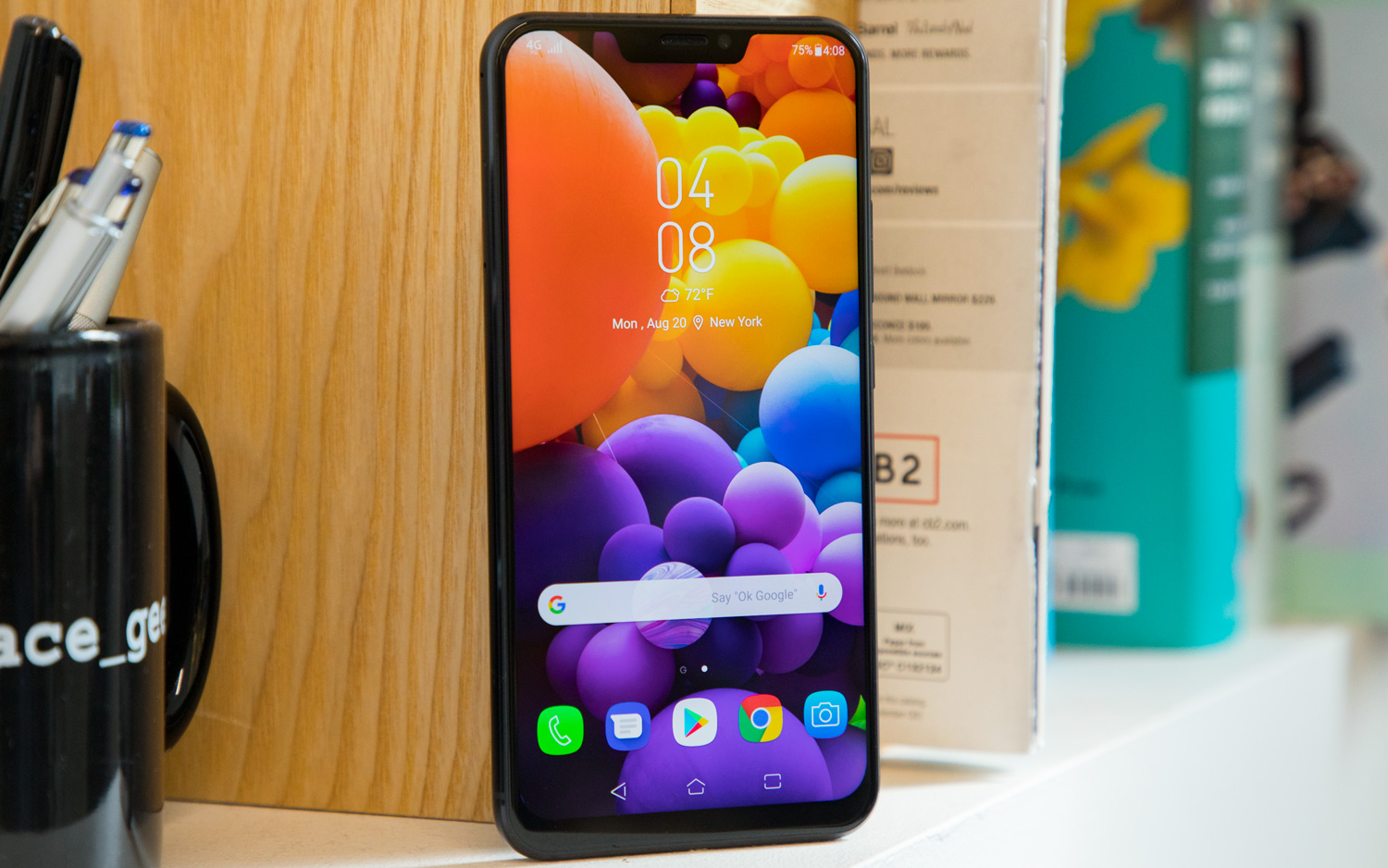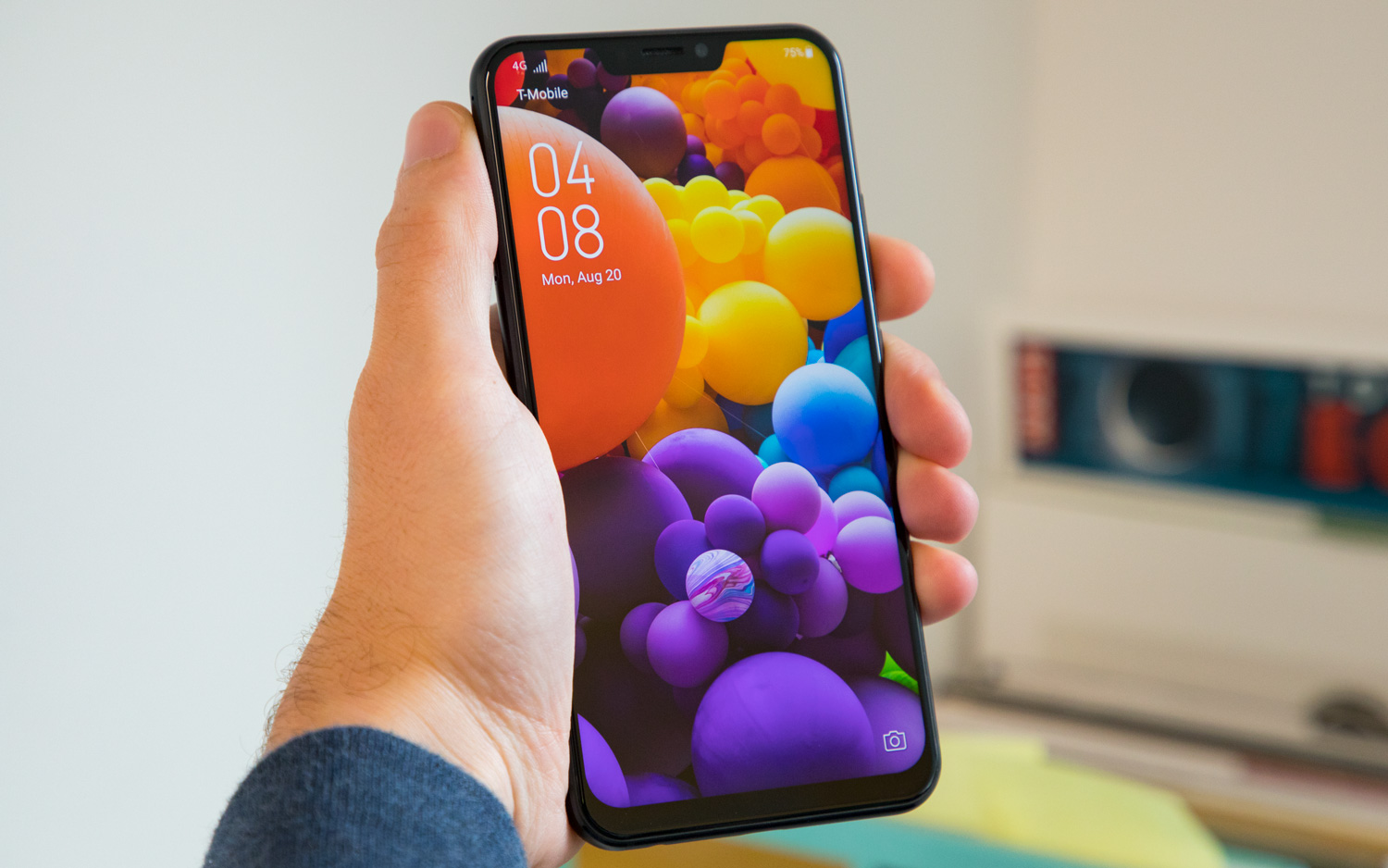Tom's Guide Verdict
Asus has put together a formidable rival to the OnePlus 6 in the ZenFone 5Z. But a derivative design and clunky software keep it from being the best.
Pros
- +
Superfast performance
- +
Low price
- +
Long-lasting battery
- +
Decent cameras for the money
Cons
- -
Software could use work
- -
Design is derivative
- -
Lacks water resistance and wireless charging
- -
Doesn't work on Sprint or Verizon
Why you can trust Tom's Guide
Asus wants a slice of the pie. No, not that Pie — the company hasn't updated its smartphones to the latest version of Android quite yet. Rather, it wants to edge its way into the budget flagship niche market that OnePlus and Honor have dominated in recent years.
That explains the $499 Asus ZenFone 5Z, a Snapdragon 845-powered handset with looks reminiscent of the iPhone X and a hodgepodge of features containing "AI" in the label.
That may as well describe half the premium Android phones we've seen this year, but it's hard to be cynical about that price — the ZenFone 5Z costs $30 less than the $529 OnePlus 6 and boasts the kind of power most companies typically demand hundreds more for.
However, specs tell only half the story, and the ZenFone 5Z's knockoff looks and nonintuitive software won't have you mistaking it for a $1,000 iPhone X. If you can put up with that, Asus' latest offering is a terrific value.
Price and Availability
The ZenFone 5Z costs $499 and comes in a single configuration featuring 6GB of RAM and 64GB of storage. The latter can be expanded by up to 2TB with a microSD card, though using external memory consumes one of the phone's dual SIM slots. Two colors are available — Midnight Blue and Meteor Silver — and the ZenFone 5Z is available through Asus' website, Amazon and B&H.
Because the ZenFone 5Z is GSM unlocked, only users of GSM networks — like AT&T, T-Mobile, MetroPCS and Cricket — will be able to run the phone on their carriers' networks. That means Verizon and Sprint subscribers are out of luck.
Asus ZenFone 5Z Specs
| Price | $499 |
| OS | Android 8.0 Oreo |
| Screen Size (Resolution) | 6.2-inch LCD (2246 x 1080) |
| CPU | Qualcomm Snapdragon 845 |
| RAM | 6GB |
| Storage | 64GB |
| microSD Slot | Yes, up to 2TB |
| Rear Camera | 12 MP (f/1.8) and 8 MP wide-angle (f/2.0) |
| Front Camera | 8 MP (f/2.0) |
| Battery Size | 3,300 mAh |
| Battery Life (Hrs:Mins) | 10:25 |
| Water Resistance | No |
| Size | 6.02 x 2.98 x 0.31 inches |
Design: Sincerest form of flattery
Personally, I've never been a fan of the iPhone X's design. The notch is one thing, but my gripes really lie with the uninspired materials, the monotone color selection and the way the camera housing looks looks like an afterthought that was tacked on at the last possible minute.

Bearing all of that in mind, I'd love nothing more than to see a phone maker not merely copy Apple's design, but improve upon it. Asus did the former, but it couldn't accomplish the latter with the ZenFone 5Z.
This isn't a bad-looking phone; it's just an ordinary one. The notch is narrower, but a bit deeper, than the iPhone X's. The bottom bezel is considerably thicker than those on every other side of the screen — a reminder that Asus and its fellow Android phone makers still haven't found a way to wrap the display driver around itself to deliver a truly consistent experience.

The ZenFone 5Z isn't water-resistant, but it feels durable, with a matte aluminum frame bridging two slabs of Gorilla Glass 3 on the front and back. Unfortunately, that glass build doesn't mean this phone supports wireless charging. On the bright side, the backside incorporates a layer of varnish that produces a concentric metallic pattern around the fingerprint sensor when the light strikes it just right.
Most of the time, though, our Midnight Blue model just seemed a really dim gray. Aside from the presence of that notch, the ZenFone 5Z doesn't look or feel appreciably different from the $299 ZenFone 5Q I tested a few weeks ago.
Display: Great for an LCD
Although Asus doesn't use an OLED display in the ZenFone 5Z, there's nothing wrong with the phone's 6.2-inch, full-HD-plus LCD panel.

In fact, you wouldn't really know what you were missing unless you placed it right next to a OnePlus 6. The ZenFone delivers a wide swath of color that's vivid but not oversaturated, reproducing 176 percent of the sRGB color space and reaching a peak full-screen brightness of 566 nits. For comparison, the OnePlus 6 managed 240 percent and 574 nits on those tests.
In the trailer for The Meg, the water was ever so slightly a deeper shade of turquoise through the screen of the OnePlus 6 than it was on the ZenFone 5Z. However, the 5Z's screen felt brighter (even if the readings from our light meter say otherwise), seemed sharper and preserved more detail, even deep within the ocean depths.
Like many other phones do, the ZenFone 5Z gives you the choice to calibrate the screen to your liking. You could opt for the more muted Standard setting, or what Asus calls Wide Color Gamut mode, which favors more saturated hues. No setting will give you the inky-perfect blacks of an OLED display, but this ZenFone does a fine enough job with LCD tech.
Camera: Solid AI shooter
Asus often promises a top-notch photography experience in its phones, and the ZenFone 5Z attempts to achieve that with a pair of cameras on the rear. The main 12-megapixel, f/1.8 lens features AI-aided scene detection that can identify 16 different scenarios, including flowers, cityscapes and more. It's joined by a secondary 8-MP, f/2.0 lens used for 120-degree wide-angle photos as well as Portrait Mode.
Does it all work? For starters, the ZenFone 5Z delivered a pleasing shot of New York's Bryant Park on a sunny August morning; in fact, the photo ended up strikingly similar to what the OnePlus 6 achieved in the same conditions. Asus' handset pulled more color out of the sky and grass, and the auto HDR mode shed a bit more clarity on the shadowy portions of the trees. However, once you zoom in on both images, you see that OnePlus' version trounces the ZenFone's photo in sharpness. That's appropriate, considering the OnePlus 6's main sensor packs four more megapixels than that of the ZenFone 5Z.
For this shot of a flower, the ZenFone 5Z relied on the appropriate scene-detection mode. I had actually tried to capture a few images of flowers before this one, and the device typically failed to identify what it was looking at. As such, I was surprised to see the little plant icon pop up in the viewfinder in this case, indicating the AI software was doing its job.
Normally, I'm skeptical of cameras with smart object recognition, but the ZenFone 5Z's software can noticeably improve photos.
The results speak for themselves, though. Normally, I'm skeptical of cameras that employ smart object recognition, because the algorithms that phone makers typically bake into the software almost always ratchet up saturation to a cartoonish degree. But that didn't happen here, and although it's difficult to tell exactly what the software is doing in this example (there doesn't appear to be a way to turn off the feature or look at a before-and-after comparison), I prefer the more gradual contrast and consistent bokeh of the ZenFone 5Z's shot to what the OnePlus 6 provided.
Unfortunately, the ZenFone's Portrait Mode couldn't keep the praise rolling. Neither phone did a great job here. The ZenFone 5Z managed a crisp but dim shot, not unlike what I observed from the cheaper ZenFone 5Q. Meanwhile, the OnePlus 6's attempt was much more evenly lit, but its white balance was overly warm. To complicate matters further, neither of these handsets has a telephoto lens, which means you get an ugly fish-eye perspective any time you try to capture a shallow depth-of-field portrait with the rear cameras.
At least the ZenFone 5Z won some points back with its front-facing camera, which delivered a much more vibrant self-portrait than the OnePlus 6. While my skin tone isn't quite as red as Asus' phone might lead you to believe, there's definitely a little more color there than in the almost monochrome example from the OnePlus. However, the light falling into our office from the window blows out the background in the ZenFone's rendition — an issue the OnePlus 6 avoided.
Performance: The new value leader
Here's where the ZenFone 5Z really makes a name for itself. This is the least-expensive phone you can currently buy with Qualcomm's top-of-the-line Snapdragon 845 processor on board.

Even better, the ZenFone 5Z combines that speedy silicon with 6GB of RAM. All told, this is among the fastest Android smartphones on the market today, yet also somehow the cheapest in its class.
That makes it an excellent choice for mobile gamers on a budget. I expected some dropped frames here and there while I was mired in a gunfight in PUBG Mobile, but the ZenFone 5Z ran like a champ, with zero slowdown on the HD graphics setting. The same was true when I went for a joyride in Asphalt 8. As far as the Android experience, apps and animations opened and unfolded with the blink of an eye.
The ZenFone 5Z is among the fastest Android smartphones on the market today, yet it's also somehow the cheapest in its class.
Therefore, I wasn't surprised to find the ZenFone 5Z turn in a score of 8,842 on the multicore Geekbench 4 overall performance test. That's not far off from the 9,098 achieved by the 8GB variant of the OnePlus 6. Impressively, the ZenFone 5Z nearly matches the Note 9's 8,876 score, even though it costs $500 less.
MORE: Galaxy Note 9 Benchmarked: iPhone X Is Still Faster
Asus' big-screen bargain also notched 4,683 in the OpenGL ES 3.1 version of 3DMark's Sling Shot Extreme graphics test — slightly greater than the Galaxy S9+'s score of 4,634 but again shy of the OnePlus 6's 5,124.
Battery: Long-lasting, fast-charging
Armed with a 3,300-mAh battery, the ZenFone 5Z turned in 10 hours and 25 minutes of usage during our battery test, in which we have phones stream web pages over T-Mobile LTE until they run out of power.

The OnePlus 6 lasted just 8 minutes longer in the same test, and those similar results are no coincidence — the OnePlus 6 has an identically sized battery that drives the same processor, as well as a display that's roughly the same proportions. Considering that the average of the other phones we've tested is 9:48, 10 and a half hours is nothing to sneeze at.
Even better, Asus loaded the ZenFone 5Z with lots of fast-charging and battery-preserving tech. There's Quick Charge 3, which delivers 50 percent of juice in 30 minutes, and Asus' AI Charging, which limits stress on the battery by learning how long you typically leave your phone plugged in overnight and then modulating power delivery so that the device doesn't spend too long at full capacity.
Software: "AI" overload
Like all of Asus' phones, the ZenFone 5Z layers the company's ZenUI front end over Android, which, in this case, is version 8.0 Oreo.

This iteration of ZenUI is new, debuting with the 5Z. I've never particularly been a fan of ZenUI, but it's cleaner and easier to navigate this time around, partly because Asus has pared down the number of its own apps.
But that's not to say Asus hasn't left its stamp on the software. New to the ZenFone 5 and 5Z is a collection of AI-branded apps, including the aforementioned AI Charging and AI Scene Detection.
While those are novel features that do appear to rely on some level of machine learning, the other AI features — including AI Ringtone, Smart Screen and AI Boost — really don't fit the definition at all. AI Ringtone is like True Tone for your phone's alerts, automatically adjusting the volume of your ringer based on ambient noise. Smart Screen merely keeps the display lit when you're looking at it (hardly new by any means), while AI Boost simply prioritizes performance when the system recognizes you're playing a game or using "compute-intensive apps."
Many of the ZenFone 5Z's AI features could vaguely be defined as smart, and maybe responsive or automatic — but certainly not artificially intelligent.
It's not hard to imagine why the very concept of AI confuses people when companies brazenly overuse the term where it doesn't actually belong. These features could vaguely be defined as smart, and maybe responsive or automatic — but certainly not artificially intelligent.
And then there's Zenimoji, Asus' answer to Apple's Animoji and Samsung's AR Emoji. Zenimoji look more similar to Apple's version. There are seven animals to choose from — including an owl, a horse and a fox — in addition to four human options. You can use Zenimoji during video calls (they're supported by Google's Duo app), and record clips or take pictures to share via any third-party messenger.
MORE: Asus ZenFone 5Q Review
The cross-app support is nice, but the real problem with Zenimoji is the same one Samsung faced when it revealed AR Emoji: The animations are far from natural, and the characters themselves aren't terribly expressive.
Animoji on the iPhone X react in real time, with a silky-smooth frame rate — almost as if you were looking at yourself in the mirror, albeit with the head of an alien or unicorn superimposed over your own. Zenimoji don't get anywhere close to that 1:1 goal, with twitchy eye tracking and an inability to detect obvious emotions, like smiles and frowns. It definitely needs more work.
Bottom Line
It's a great time to be in the market for a new Android phone, and that's because of handsets like the Asus ZenFone 5Z.
Years ago, your only choice for a relatively inexpensive phone with the fastest processor available at the time would have been one of Google's Nexus products. That's changed, though, and the ZenFone 5Z is a great choice for customers interested in saving even more than they already would on the OnePlus 6, or for people who really want the iPhone X design in a handset that costs half the price.
Of course, you'll still have to make compromises for spending so little. The 5Z's LCD screen isn't going to make your jaw drop in the same way OLED panels will, the cameras are good but not great, and some of the extra software features aren't as special as they're cracked up to be. The OnePlus 6 still offers better overall value. However, the ZenFone 5Z is a satisfying budget-priced flagship.
Credit: Tom's Guide
Adam Ismail is a staff writer at Jalopnik and previously worked on Tom's Guide covering smartphones, car tech and gaming. His love for all things mobile began with the original Motorola Droid; since then he’s owned a variety of Android and iOS-powered handsets, refusing to stay loyal to one platform. His work has also appeared on Digital Trends and GTPlanet. When he’s not fiddling with the latest devices, he’s at an indie pop show, recording a podcast or playing Sega Dreamcast.

